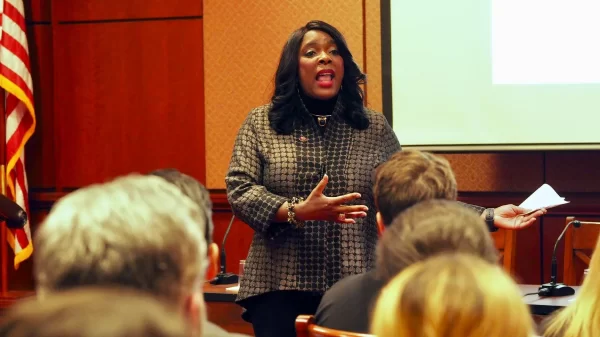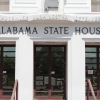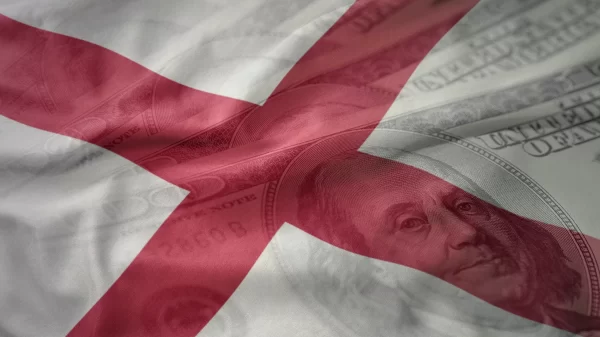Members of the Alabama Senate were in Montgomery Thursday for hearings on the budget, where Senators were told that both of the budgets are in good shape looking forward to 2021.
The meeting was chaired by Senate Finance & Taxation Committee Chairman Greg Albritton.
Kirk Fulford is the Deputy Director for the Fiscal Division of the Legislative Services Agency.
“I don’t know a better time to do this than in the middle of the biggest health emergency we have ever see and a recession,” Fulford said of the Senate decision to hold a budget hearing in July while the legislature is not in session. “I hope you hold more of these between now and the start of the next legislative session.”
“Both budgets you passed are in good shape looking forward to 2021,” Fulford said predicting that both the State General Fund (SGF) and education trust fund (ETF) would be able to avoid proration even if the economic downturn is protracted and state revenues experience no growth at all in fiscal year 2021, which starts October 1.
The state of Alabama uses a very arcane budgeting system where over 93 percent of revenues are earmarked and all the money goes into two budgets set by the Legislature (the ETF and SGF). There are also $billion of dollars in revenues to state agencies not included in the budgeting process. The state also collects another roughly $7.5 billion in federal dollars in a typical year, most of it in matching funds.
Despite the economic crash that occurred in March due to the forced economic shutdown and the lingering economic costs to fight the spread of the coronavirus, Fulford said that he expected that both budgets will finish 2020 with growth. Much of that was due to the robust economy the state experienced from Oct. 1 to Feb. 28 before the coronavirus crisis and Fulford broke the state’s fiscal performance down for both budgets into separate income statements for the Oct. 1 to Feb. 29 period and the Mar. 1 to June 30 period.
The SGF, which funds non-education state agencies, budget was $2,151,954,704.
“Things were growing great through February,” Fulford said.
Since then the state’s lodging tax receipts have experienced a decrease of $7,4 million and oil and gas revenues are down $4.4 million; however the new Simplified Sellers USE Tax grew by $51 million thru June. More people are buying more of their stuff online and SSUT allows the state to collect much more taxes on those online sales.
“The General Fund’s strength is built on several changes that have been made by the legislature,” Fulford said. “The state has not prorated the general fund budget since 2012.”
Fulford predicted that the state will not need to prorate the general fund, “Even if there is a recurrent COVID situation and even if there is another shutdown.”
Fulford praised the legislators for moving that growth revenue to the general fund. Prior to the redistribution of use taxes from the ETF to the SGF, use taxes brought in less than $one million to the general fund. The Simplified Sellers Use Tax and the Supreme Court ruling in Wayfair vs South Dakota changed all of that. In FY2019 the SSUT brought in $70 million. Fulford anticipates that it will bring in $125 million in FY2020 is complete.
In addition to the SSUT Fulford credited legislators for their conservative budgeting and for in 2012 the legislature changed how the Alabama Trust Fund pays out its oil and gas trust fund moneys from a market fluctuating model to a fixed payment model. The Alabama Trust Fund will pay $104 million for the SGF in the current year and $116 million for the next year.
Fulford predicted that the SGF will have 2021 receipts of $2.406,000 receipts with $46 million in growth in FY2021. Fulford said that the FY2021 SGF budget passed by the legislature is $170 million more than the FY2020, but $170 million less than the Governor had predicted in February. “It is still the highest general fund in state history.”
Fulford next broke down the ETF, the education budget.
“We were anticipating above average growth rate in 2020,” Fulford said.
The 2020 ETF budget estimated receipts of $7,582,260.
Fulford said that thru February the ETF receipts were up 8.04 percent primarily due to increase in income and sales tax revenues. From March 1 to June 30 revenues have declined by 17.83 percent versus the same period in 2019. ETF revenues in that period have declined by $405,862,551.
Fulford said that part of that is due to moving the payment dates back, both the income tax deadline of April 15 to July and the quarterly estimated payments.
“We will know more by the end of the month,” Fulford predicted, “We anticipate that a lot of that money will come in in July. We will know by the end of the month what those numbers look like.”
Despite the economic collapse total ETF growth for 2020 is 1.09 percent. Net receipts are $5,473,075 by the end of June. $58,980,858 in growth due to the large annual growth before the COVID-19 impact of $224.5 million.
Fulford said that a provision in the Rolling Reserve Act allowed the state Finance Director to transfer $301.6 million from the budget Stabilization Fund to alleviate cash flow problems in the ETF. The state may not need that money anymore by the end of July, depending on July receipts.
Citing the Rolling Reserve Act and the conservative budget passed by the legislature, Fulford predicted that the state an cover ETF next year even at zero growth in revenue.
State Finance Director Kelly Butler explained to the Senators how the CARES Act was being appropriated to the state. The estimated total allocation to Alabama was $4.100,738,000 for COVID-19 expenses. $1.9 billion was appropriated to the state to spend. $115 million had to go to Jefferson County leaving state government with $1.789 billion to appropriate. Butler explained that the money is very limited in what it can be spent on and the state has had to have guidance from federal officials on their latest interpretations of the CARES Act rules.
Fulford explained that the Payroll Protection Program has greatly benefitted state finances.
Alabama businesses received 7,878 loans thru the closing of the PPP program deadline on June 30.
“408,803 jobs were retained because of the loan program,” Fulford said. “The situation with our economy would be vastly different if that program had not been established.”
State Senator Jim McClendon (R-Springville) said that a record over 2000 people tested positive for coronavirus just today. If everyone follows the health protocols, that person and everyone in that household have to self quarantine for 14 days if they don’t have it and if they do get COVID-19 or have to care for someone with COVID-19 they could be out from work for over a month.
Fulford acknowledged that there was a “Trickle down effect to everyone in that household,” and that “Has an impact going forward and one that you have to pay attention to.”
“I am concerned about the long lasting effects of this virus,” Butler said. “We are going to have to learn to live with this virus until it is cured, an effective therapy is developed or a vaccine.”























































